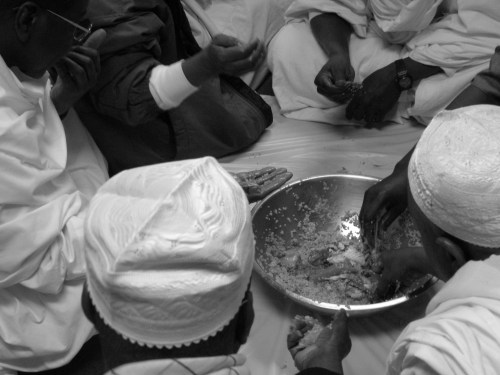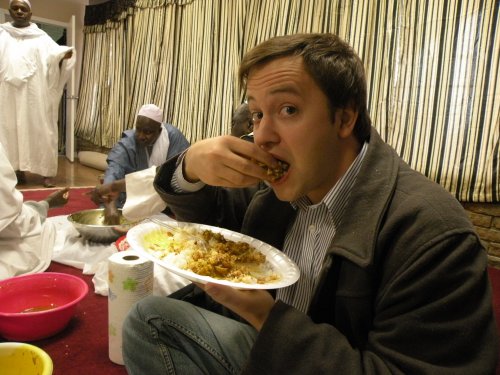by Frankie Martin: On June 10, the Washington National Cathedral hosted an extraordinary event. The Episcopal Bishop of Washington, the Rt. Rev. John Bryson Chane, launched the new book Journey into America: The Challenge of Islam by Akbar Ahmed, which is published this month by the Brookings Institution Press.
Participating in a roundtable discussion in the Cathedral’s gothic library was a powerful assortment people in different fields, including a priest from the US Conference of Catholic Bishops, a top Jewish interfaith leader, a representative from the Turkish Embassy, and prominent Washington journalists including the London Times Washington Bureau Chief, Christina Lamb, and Sally Quinn, the co-moderator of the Washington Post‘s On Faith. Also attending was one of President Obama’s liaisons to America’s Muslim community, several American Muslim journalists, a member of the Rumi Forum, and representatives from the FBI and Department of Homeland Security.
They had all come together to hear the results of a two-year project in which Professor Ahmed, American University’s Chair of Islamic Studies, and a team of researchers including myself, went on a grueling journey to 75 US cities and 100 mosques to study Islam in America and its relationship to American identity. The diverse attendees wanted to understand the important issue of Islam in America, discover ways to better build bridges between members of different faiths, and seek solutions to problems like homegrown terrorism.
Speaking about the book, Bishop Chane described it as an remarkable work on Islam in America and also American history, which everyone should read “not once, but twice.” The Rev. Dr. Carol Flett, the Cathedral’s Interfaith Programs Coordinator said she “learned so much about America” from the book and in a glowing review on the Cathedral’s website wrote that “the book will open your eyes and hearts into the lives of Muslim Americans.”
I was especially proud that Journey into America was launched at the National Cathedral because I grew up in the Episcopal Church. Reaching out to members of other faiths has always been extremely important to me and I was inspired on our journey to find Muslims and non-Muslims making great strides in interfaith dialogue at a time of great tension and misunderstanding.
We learned of church members surrounding mosques to protect them after 9/11 and met a rabbi in Los Angeles who prays with Muslims to reinforce the notion that they are worshipping the same God. The Jewish vice mayor of Chicago, Berny Stone, named a street in the city after Mohammad Ali Jinnah, the founder of Pakistan, and said that he actually has more support among local Muslims than Jews. In Omaha, we met members of the Jewish, Christian, and Muslim communities who have assembled in an organization called Tri-Faith to build a synagogue, church, and mosque on the same property. And in the small town of Columbia, Tennessee, we heard the inspiring story of a Presbyterian pastor who gave the town’s tiny Muslim community the keys to his church to pray in after Christian white supremacists firebombed their mosque. The destruction of the mosque was a reminder of what can occur when people of different faiths and cultures fail to reach out to one another.
For the Founding Fathers, interfaith dialogue and pluralism was the very definition of what it meant to be American. That a book on Islam in America by a world-renowned Pakistani anthropologist could be launched at the National Cathedral by Washington’s Episcopal Bishop is a testament to this vision.
For me, the setting and theme of the event was both familiar and inspiring. It was in the same Cathedral where Professor Ahmed, joined by the Bishop and Senior Rabbi Bruce Lustig of the Washington Hebrew Congregation, had first announced his plans to study US-Muslim relations and I had committed to joining him. I was pleased to see that the project had concluded in that same atmosphere of support, understanding, and hope.






